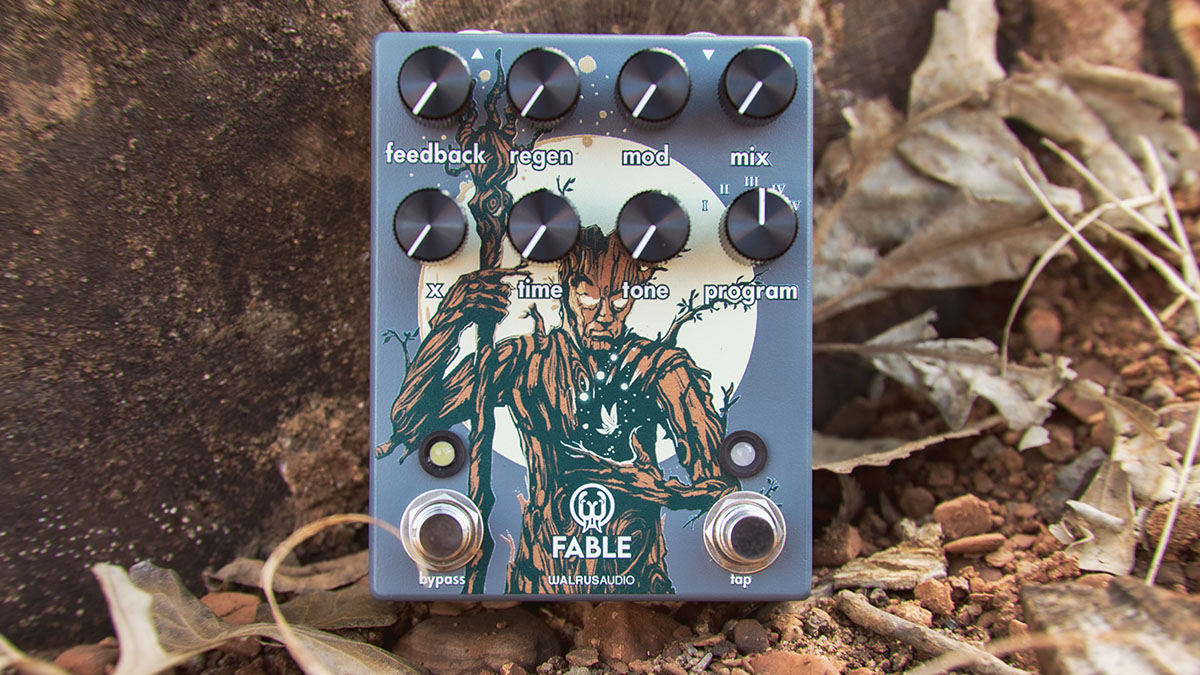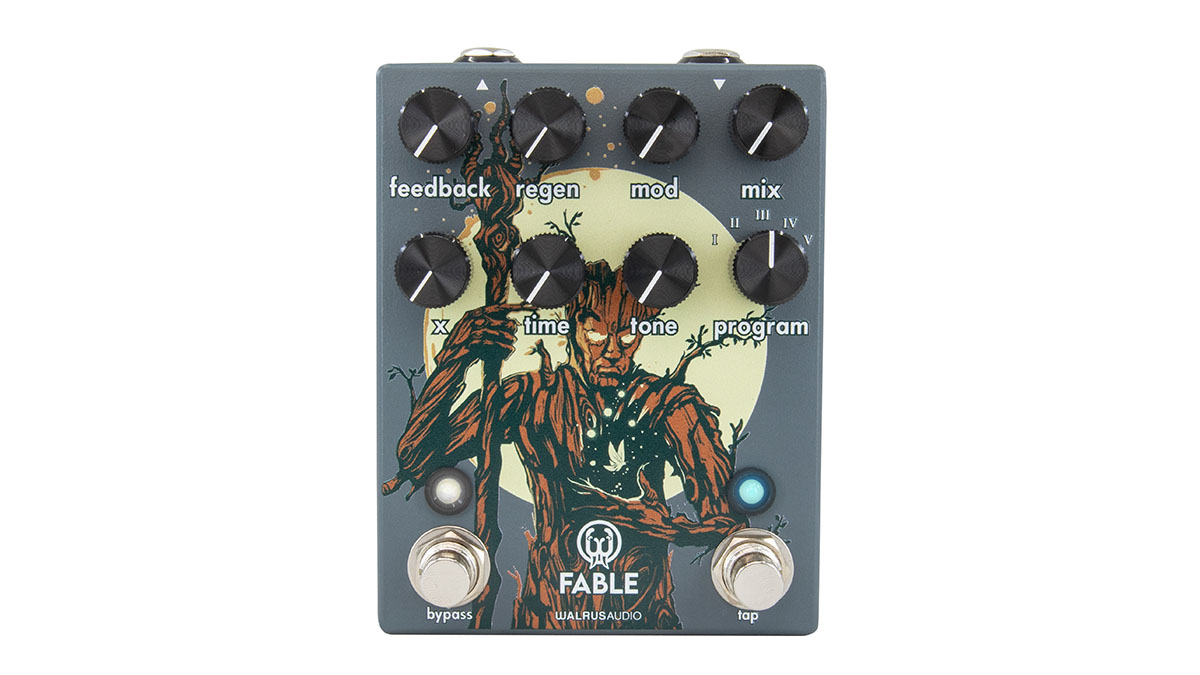Walrus Audio expands its Storybook Sonic Adventure pedal series with the Fable Granular Soundscape Generator
With five all-new five granular delay programs, tap tempo, modulation, lots of controls and processing power, Fable is writing a new chapter in the history of the delay pedal

Walrus Audio has launched a delay pedal less ordinary, the sort of pedal that harnesses the power of digital to take your electric guitar tone onto a more ethereal plane. It’s called the Fable, and it is technically described as a Granular Soundscape Generator.
What does that look like when it’s on your pedalboard? Well, think of the Fable as a companion piece to Lore, which was of course a Reverse Soundscape Generator, with both part of Walrus Audio’s ‘Storybook Sonic Adventure’ series.
Fable has the same sized enclosure and a similarly comprehensive array of controls to tease some really outré sounds out of your instrument. There are two banks of four dials arranged across the top of the enclosure, and two footswitches, one to bypass/engage, the other for tap tempo.
Before we take a closer look at the controls, let’s explain what is going on with Fable, because this ain’t your common or garden delay. Fable has five granular delay programmes, and takes your signal and processes it through two distinct feedback paths, each with its own DSP chip.
The signal passes through the two separate effects in series and then is passed back in through both chips again before coming out the other side dazed and no doubt confused too. In a sense, we are too, but luckily we don’t have to follow the circuit logic; we just have to trust the destination, and that’s all kinds of weird and wonderful soundscapes.
To quote Walrus, this will take you “from smooth, flowing ambience; to bizarre, organic reverberance; to chaotic, glitchy swarms”.

Now to those controls: There are Feedback, Regen (regeneration) dials which are crucial to processing both signals as the pass on through. Feedback controls the amount of gain in the first feedback path while Regen controls the amount of gain in the second.
Want all the hottest music and gear news, reviews, deals, features and more, direct to your inbox? Sign up here.
The Mod knob controls the amount of modulation to the processed signal, and you can adjust its rate by holding down the bypass footswitch and turning this dial. The LED will pulse in time with the rate. Simply release the bypass footswitch when you’ve set the speed and away you go – the modulation preset is saved.
Mix is self explanatory, and at fully counterclockwise your signal is fully dry, fully clockwise and all you are hearing is processed sound. Now things get interesting. The Time knob controls delay time and the granular buffer size – in other words, the length of the buffer from which grains are sampled.
Tone applies low and high-pass filters that can dramatically change the resonant character of your repeats, from “deep underwater lows” to “breathy ambient clouds”.
The X knob controls ‘grain size’, in other words the chopped sample length of your granular effects, so that when it is turned counterclockwise it gives you smooth sampling, with short and choppy sounds when turned clockwise. X also controls the pitch-shifting in Fable’s Mode 5.
Now, the modes! As with the Five-State drive pedals, the Lore, Walrus has put five modes behind a rotary dial that present you with five core sounds to play with.

Mode 1 is a reverse delay into a reverse granular effect. Mode 2 is forward delay into an octave-up granular effect. Mode 3 is a change of pace, offering an analogue delay into an octave-down granular effect while Mode 4 is “Multi-Tap Granular into Multi-Tap Granular (Grain-Verb)”. Hmm… That's definitely one you really have to hear to appreciate but then, come to think of it, so too is Mode 5, a forward-facing delay going into a randomised pitch granular effect.
Yes, Fable will certainly do weird. With David Hüttner’s tree man enclosure art, it looks pretty cool, too. Fable is available now, priced £305 / $299. For more info, head to Walrus Audio.
Jonathan Horsley has been writing about guitars and guitar culture since 2005, playing them since 1990, and regularly contributes to MusicRadar, Total Guitar and Guitar World. He uses Jazz III nylon picks, 10s during the week, 9s at the weekend, and shamefully still struggles with rhythm figure one of Van Halen’s Panama.
